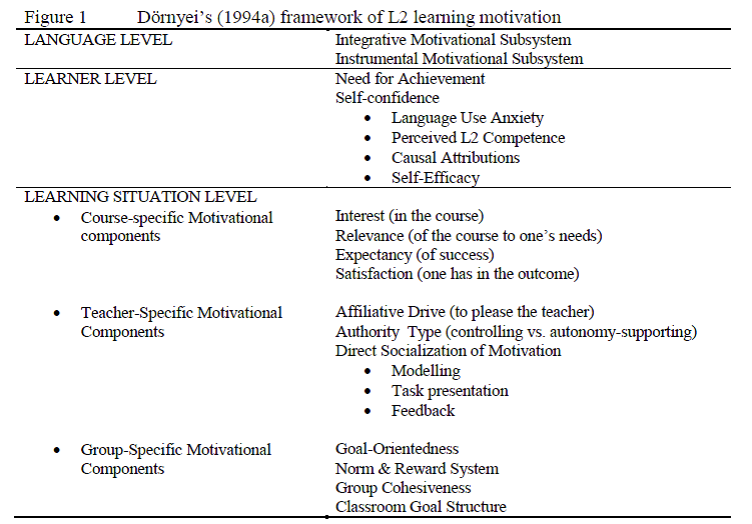3.1 Motivating young learners
Think
- What have you experienced so far regarding learners’ motivation?
- Do you have any specific activities that can be used for motivation?
- Why do you think that motivating young learners can be problematic?
It is frequently reported that there is an apparent lack of motivation and interest in English on the part of learners, who may not see any need to learn the language or simply do not see mastery of it as attainable.[1]
“Motivation is one of the main determinates of second/foreign language learning achievement”[2]. Several types of motivation must be considered. Intrinsic motivation relates to a learner who has a desire to do something regardless of external pressures. Extrinsic motivation, on the other hand, involves outside forces that want the learner to complete a task. Motivation can be further broken down into integrative and instrumental types. Integrative motivation relates to a student wanting to interact with people, using the target language. Instrumental motivation is evident when there are specific tasks that the learner wishes to be able to do.

[1] Li, D. F. (1998). ‘It’s always more difficult than you plan and imagine’: Teachers’ perceived difficulties in introducing the communicative approach in South Korea. TESOL Quarterly, 32(4), 677−703.
[2] Dörnyei, Z. (1994). Motivation and Motivating in the Foreign Language Classroom. The Modern Language
Journal. 78/3, pp. 273-284